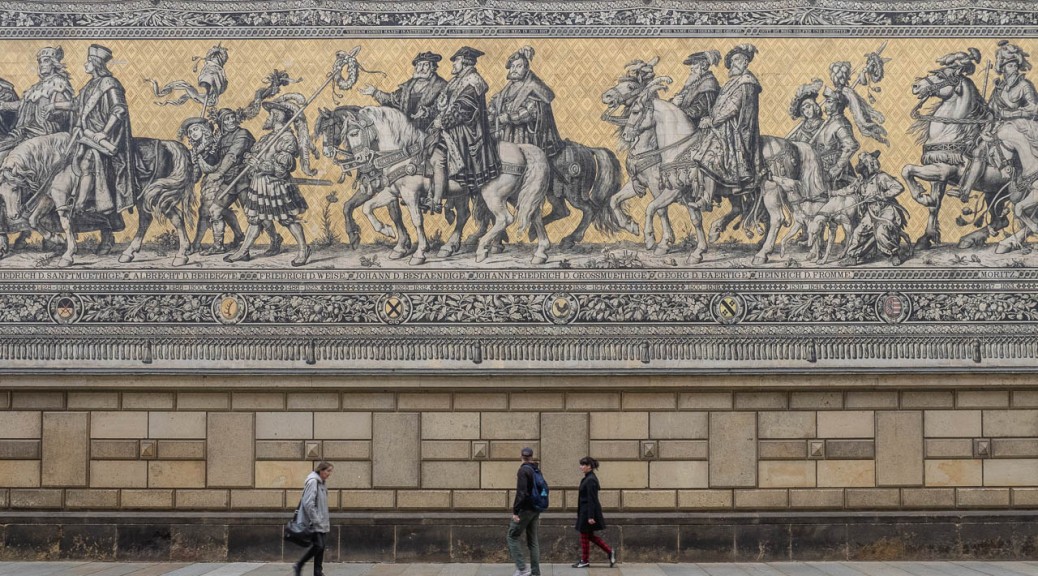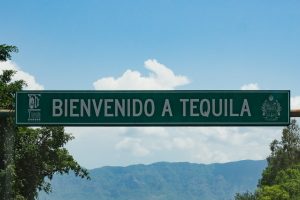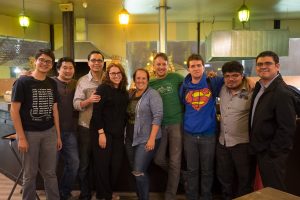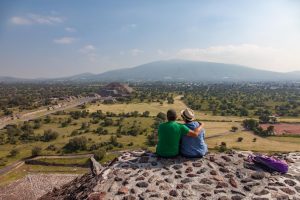Dresden has long been on my list of cities to visit. It was heavily bombed by the Allies towards the end of World War 2. Prior to the second world war, Dresden had a long history as the capital of the highly influential and sophisticated Kings of Saxony. Its nickname during their reign was “The Jewel Box” because of its beautiful and opulent baroque and rococo architecture. It was during the reign of the Saxon kings in the late 1700 that Dresden became a European center for science, innovation, and courtly opulence. Everything from porcelain dinnerware and decorations to scientific equipment, clocks, etc. were produced in Dresden.
The best place to see Dresden’s opulent past is to visit the Zwinger Palace. We only had one full day in Dresden and we wanted to see as much as possible. We arrived on Monday evening excited to visit the palace the next day. Except that we did not plan correctly. Most museums are closed on Mondays, not all, but most. We showed up to the palace on Tuesday morning to discover that it was closed on Tuesdays and not Mondays.
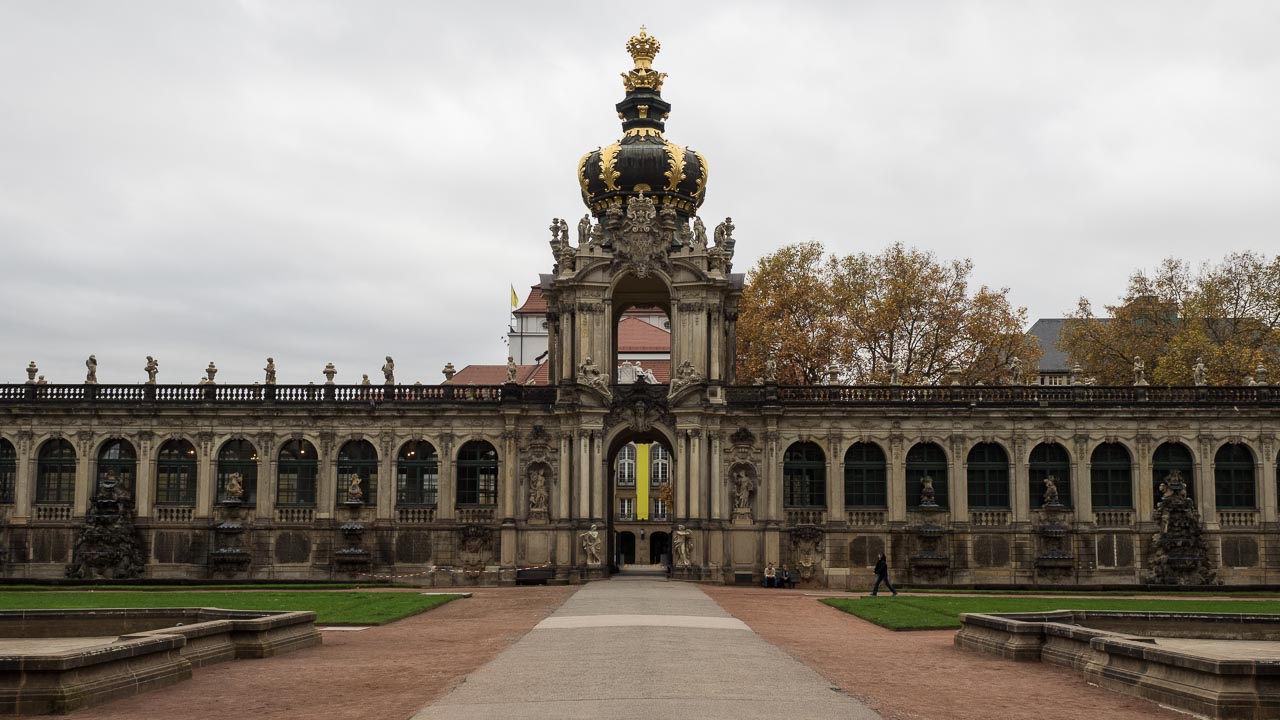 All was not lost. We were able to visit the fascinating Mathematisch-Physikalischer Salon, the oldest museum in the complex. While it is called the Mathematics and Physics Salon, I found it really interesting even though I am not usually interested in physics or math. The museum contained a number of telescopes that were created in the mid to late 1700s, when Dresden was a center of science in Europe. There were also an awesome number of timepieces, mechanical toys, astronomical measuring tools and models. All were incredibly beautiful combining artistry and science unlike anything we see today. The pieces were all displayed so well, that even their tiniest details were easily observed and appreciated.
All was not lost. We were able to visit the fascinating Mathematisch-Physikalischer Salon, the oldest museum in the complex. While it is called the Mathematics and Physics Salon, I found it really interesting even though I am not usually interested in physics or math. The museum contained a number of telescopes that were created in the mid to late 1700s, when Dresden was a center of science in Europe. There were also an awesome number of timepieces, mechanical toys, astronomical measuring tools and models. All were incredibly beautiful combining artistry and science unlike anything we see today. The pieces were all displayed so well, that even their tiniest details were easily observed and appreciated.
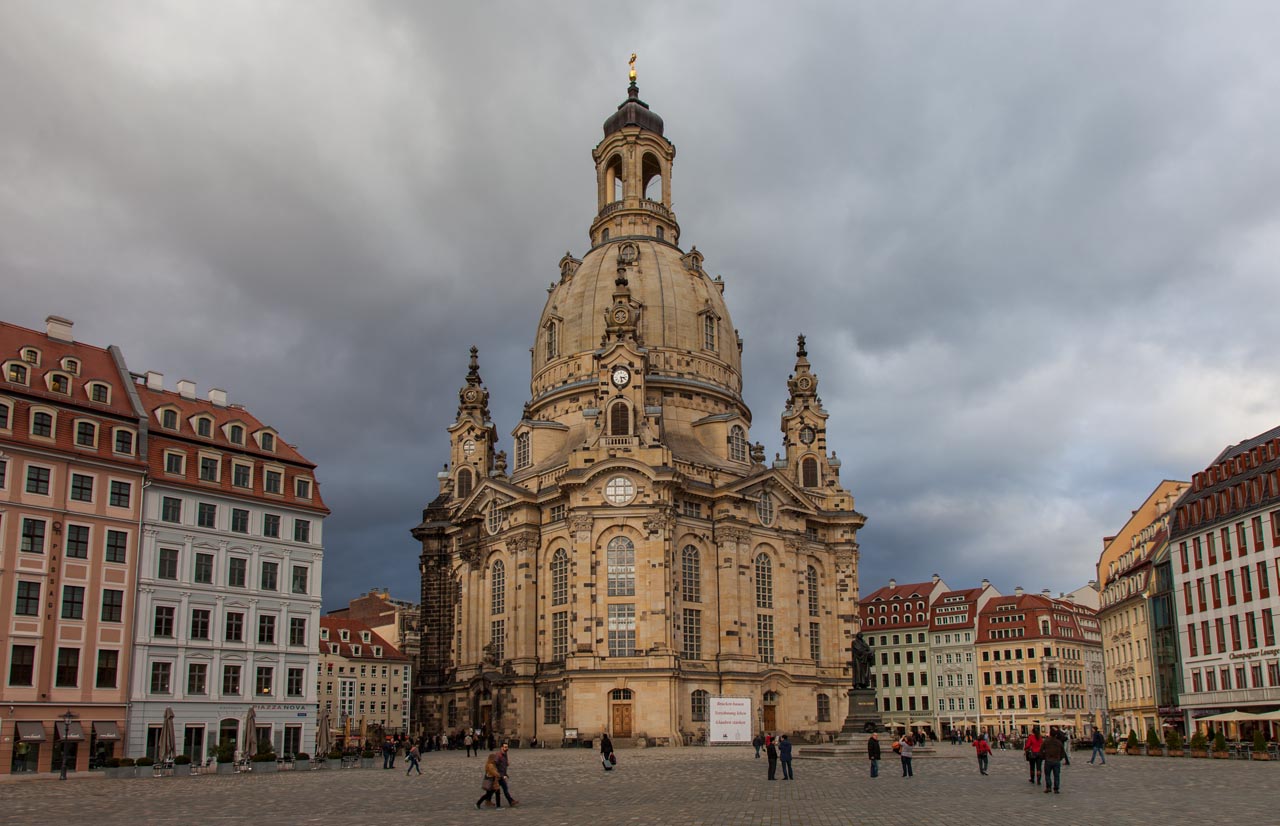 Dresden is also home to one of the most famous cathedrals in Europe, the Frauenkirche. This cathedral, along with the rest of the city, was all but destroyed during the bombing during the second world war. In 1990, after the fall of the Berlin Wall, historians, artists, and government officials began to raise funds to rebuild the cathedral and the city. As luck would have it, Matt and I were able to secure a hotel-apartment with a view of the cathedral. Because it was during the off-season, our hotel right on the main square was affordable and had a windows that opened to the side of the cathedral. We stayed in Aparthotel Muenzgasse, which is a combo apartment and hotel room. It has a little galley kitchen, full and very comfortable bedroom and good-sized bathroom. We have noticed Aparthotels opening up all over Europe. They are a great alternative to traditional (usually smaller) hotel rooms and Airbnb because they are often in the center of town and provide a little kitchen with a stove, refrigerator, dishes, etc. Anything that you might need to at least eat breakfast in your room. It also helps that these hotels are often less expensive than traditional hotels.
Dresden is also home to one of the most famous cathedrals in Europe, the Frauenkirche. This cathedral, along with the rest of the city, was all but destroyed during the bombing during the second world war. In 1990, after the fall of the Berlin Wall, historians, artists, and government officials began to raise funds to rebuild the cathedral and the city. As luck would have it, Matt and I were able to secure a hotel-apartment with a view of the cathedral. Because it was during the off-season, our hotel right on the main square was affordable and had a windows that opened to the side of the cathedral. We stayed in Aparthotel Muenzgasse, which is a combo apartment and hotel room. It has a little galley kitchen, full and very comfortable bedroom and good-sized bathroom. We have noticed Aparthotels opening up all over Europe. They are a great alternative to traditional (usually smaller) hotel rooms and Airbnb because they are often in the center of town and provide a little kitchen with a stove, refrigerator, dishes, etc. Anything that you might need to at least eat breakfast in your room. It also helps that these hotels are often less expensive than traditional hotels.
Unfortunately, Dresden and the state of Saxony are at the center of the right-wing, anti-immigrant PEGIDA movement in Germany. This group has become increasingly vocal and active over the past 18 months. Our first night in Dresden, there was a rally in the center of town. It was a bit unnerving to turn the corner and come across about 10,000 angry, right wing activists, many of whom are neo-nazis. This group’s rise in popularity is alarming and illustrative of the tough issues facing Europe these past couple of years. The increase in refugees arriving from Syria, Afghanistan, and parts of North Africa over the summer of 2015 and the politicization of their plight by right-leaning politicians fed the hatred and anger against immigration and Muslims. We were happy to see that despite the massive crowd, there was a group gathering in front of the Frauenkirche to march in protest of PEGIDA. We did not see any violence, nor did we hear reports of any. We were just glad that we couldn’t understand the parts of the speeches that we heard at the PEGIDA rally.
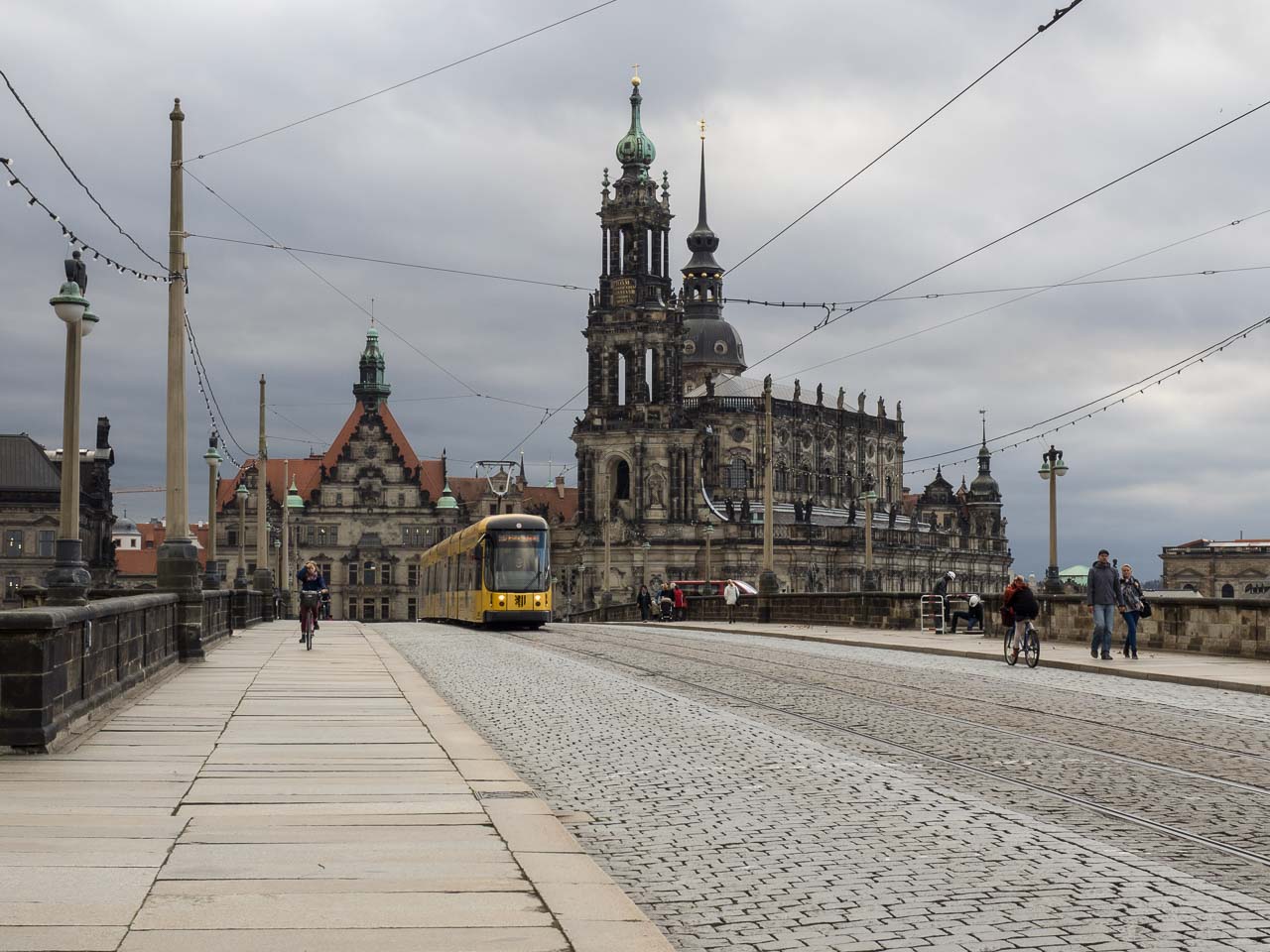 One of the great things about visiting Dresden, that it is an easy, walkable city with all of the main buildings of interest within a short distance of each other and along the river. We spent the day walking through the historic buildings, opera house, cathedrals, and along the river. We were sad that we did not get a chance to tour the rest of Zwinger Palace or the other museums, but now we know for next time.
One of the great things about visiting Dresden, that it is an easy, walkable city with all of the main buildings of interest within a short distance of each other and along the river. We spent the day walking through the historic buildings, opera house, cathedrals, and along the river. We were sad that we did not get a chance to tour the rest of Zwinger Palace or the other museums, but now we know for next time.
-Neeley (9-11 Nov, 2015)
